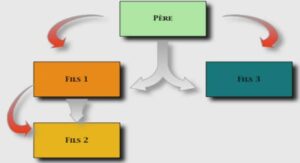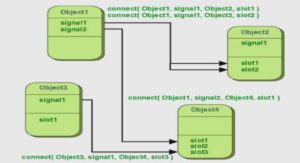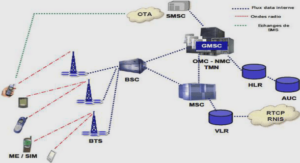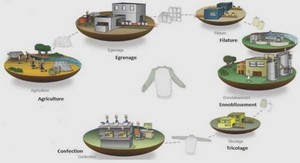Genetic and Epigenetic Determinants of Thrombin
Generation Potential
Thrombin
‘The living enzyme of my blood’ is how Walter Seegers, one of the pioneers studying thrombin, defined this protein ten years ago1 . Thrombin, also known as coagulation factor II, is a 36000 Da serine protease composed of two chains: a light one (or A) and a heavy one (or B); unified by a covalent disulfide bound. His precursor, the zymogen Prothrombin (or FII), is synthesized in the liver and, once released, it is cleaved, exposing the domains and activating its functions (FIIa). Like others clotting factors, prothrombin is part of the vitamin K dependent family and is characterized by a γ-carboxyglutamic acid domain (Gla-domain) that depends on the union of the vitamin K and calcium (calcium-binding domain). Both molecules allow prothrombin to easily anchor into the cell membrane where it is functionally more active2,3. Other important domains for thrombin activities are the Sodium-binding site, and the exosites I and II3–5 . The first is essential to modulate the ambivalent main functions. In normal physiological conditions, 60% of thrombin has this site occupied by Na+ making it more efficient to interact with pro-coagulation factors. On the other hand, without Na+, thrombin is more anti-coagulant. The two other thrombin epitopes are the binding sites of cofactors and proteins. In a general manner, the exosite I binds to fibrinogen, factor V, factor VIII, factor FXI, PAR1, thrombomodulin and protein C; while exosite II binds to heparin, glycoproteins and other cofactors that make thrombin more efficient in its functions4,6,7 (Table 1.1.). 1.1. The functions of thrombin The most fundamental and studied function of thrombin is his central and pivotal role in haemostasis: catalyzing the formation of Fibrin that will form the thrombus (or fibrin clot), activating other pro-coagulant factors and also triggering anti-coagulation enzymes8 . Thrombin also participates, beyond the haemostasis, in other physiological mechanisms , such as the immune, nervous, gastrointestinal, and musculoskeletal systems. Thrombin interacts with proteins and receptors, activating platelets and endothelial cells, and stimulating cell adhesion, angiogenesis, cell growth and differentiation, proliferation, vasoconstriction and inflammation. All this wide variety of Motivations and background 6 functions is modulated by a complex combination of substrates, cofactors and their plasma levels4 (Table 1.1. and 1.2.).
Thrombin in Haemostasis
Haemostasis is the main physiological regulatory mechanism of the blood flow and of its integrity. It includes both the formation of the thrombus (i.e coagulation) and its dissolution (i.e fibrinolysis) 9 . The dynamics of the coagulation can be explained in three phases10 . 1) The initiation of coagulation. 2) The propagation and amplification. 3) The termination. This last step and the fibrinolysis are both the other pan of the haemostasis balance, dissolving the formed thrombus. Thrombin is key for haemostasis balance due to its paradoxical main functions. First, it triggers the formation of clots when the vessels are Motivations and background 8 damaged and then helps to stop the process to avoid their progress into the normal vasculature4 .
Blood coagulation: Initiation. Platelet plug formation
At the beginning, when a vessel is damaged, collagen and von Willebrand factor become exposed to the blood (Figure 1.1.) and attract the platelets to the injured point starting to build the clot. Both collagen and vWF activate platelets through glycoprotein (GP) membrane receptors such as the GPIIb-V-IX and GP1bα respectively4,9, and that causes i.e. the releasing of P-selectins in the cell surface to help the cell-cell adhesion11 . This step is called primary haemostasis. But this first plug of platelets is unstable and needs the fibrin fibbers to consolidate it. On the surface membrane of these first aggregated platelets takes place the thrombin production and then its activity will contribute to transform fibrinogen into fibrin . That is why the anchoring of thrombin to the cell surface through the Gla-domain and calcium binding domain is very important (page 5). Thrombin activation is the result of the coagulation cascade, a mechanism very efficient where many proteins are involved (Table 1.3.) and ones activate the following others (Figure 1.2.). The cascade can also be described based on two pathways: the intrinsic and the extrinsic. At the beginning, they were considered as equal part of the initiation process of coagulation. Nowadays, it is suggested that the coagulation initiation step would correspond to the extrinsic pathway and the intrinsic one would be part of the amplification and prolongation12 (Figure 1.2.). The coagulation cascade is triggered by the tissue factor (TF), which is a membrane receptor. It is normally present in extravascular tissues but when it is exposed to blood, meaning there is some kind of vessel damage, the coagulation starts4 . Its first action is to activate factor VII (FVIIa, activated) becoming the TF-FVIIa complex that then activates two other factors: factor IX and factor X. The extrinsic and intrinsic pathways both lead to the Chapter1. Thrombin 9 activation of FX, reason why FX is established as the connection between the two pathways and thereafter the common coagulation pathway starts13. FXa alone is scarcely efficient and only proteolyses a small amount of prothrombin to its active state thrombin, plus other secondary fragments: fragment F1+2 and meizothrombin4 . Together, the meizothrombin and thrombin join to adrenergic receptors in the nearby smooth muscle cells resulting in a vasoconstriction of the area of clotting helping to stop the bleeding.
Blood coagulation: Propagation and amplification
Once that small, but sufficient, amount of prothrombin is activated (2nmol/L), thrombin starts to interact with cofactors and substrates causing the burst of coagulation1,3,4,9,15 . In this part of the process, the presence of sodium ions (Na++) is essential, as it will give to thrombin the suitable allosteric conformation to be bound easily with pro-coagulant substrates. Besides, calcium, also called coagulation factor IV, is important for the activity of thrombin and different proteic complexes. The most important thrombin’s substrate is fibrinogen that is proteolysed to form fibrin units (Figure 1.3., arrow 1). These units are assembled in fibers that tangled the platelets and other necessary cells and molecules, and all together help to fix and stabilize the clot. Factor XIII is also activated (FXIIIa) by thrombin (Figure 1.3., arrow 2) and it acts crosslinking the fibrin fibers and helping to form the net of the thrombus (Figure 1.3., arrow 3). Furthermore, thrombin proteolyses the factors V and VIII (Figure 1.3., arrows 4) that are both important to ameliorate the efficiency of the factors Xa and IXa, respectively. FVIIIa with FIXa form the IXa-VIIIa complex (tenasa complex) that activates more factor Xa. This conjugation makes FIXa 105 -106 folds more active (Figure 1.3., arrow 5). Then, FXa combined with factor Va, become the Xa-Va complex (the prothrombinase complex). This complex also increases by 3·105 folds the thrombin activation1,16 (Figure 1.3., arrow 6).
Thrombin also activates factor XI, which becomes FXIa (Figure 1.3., arrow 7) helped by FXIIa whose activation in vivo is still controversial9,17. This part of the cascade is equivalent to the intrinsic pathway (Figure 1.2.), also known as the contact pathway (or even kallikrein/kinin system) because FXII in vitro is activated by the negative charges present in the surface of sampling tubes8 . Once FXI is activated into FXIa, it triggers the coagulation activating even more FIXa (Figure 1.3., arrow 8). From here starts the common pathway again. FIXa complexes with FVIIIa to boost the activation of FXa and together activate more FXa (Figure 1.2., and 1.3.). This intrinsic pathway is very important to amplify the coagulation and the density of the fibrin. Deficiencies (mild or total) of FXI produce a very variable bleeding disease also called Haemophilia C18. Instead, FXII deficiencies are not associated to bleeding disorders, which makes it interesting as a possible anti-coagulation treatment17 . Concurrently with all the reactions described above, thrombin activates more platelets and endothelial cells allowing increased cell aggregation by P-selectin and mobilization of more receptors to anchor more prothrombin3 .
Blood coagulation: Termination
A tightly and accurate regulation of coagulation is very important to ensure that it do not pass beyond to a physiologically normal vessel. Antithrombin, tissue factor pathway inhibitor (TFPI) and protein C are the main proteins controlling the amounts of thrombin generated. In this situation, a lack of sodium ions gives thrombin the ability to attract more anti-coagulant factors and cofactors. There are two kinds of inhibitors: the indirect and the direct (Figure 1.4.). Indirect inhibitors The indirect inhibitors are those that cleave o inactivate the necessary proteins for the thrombin activation. These include TFPI, protein Z, ADAMTS13 and thrombomodulin. TFPI is one of the most important and principal inhibitors of the coagulation19 with big affinity for TF-FVIIa and FXa (Figure 1.3.). It is widely distributed in healthy arteries, in the endothelial cells, in smooth muscular cells and in macrophages, and is colocalized with TF8 . It only takes place in early stages of the coagulation and TFPI inactivates the TF-VIIa complex and also the factor Xa (FXa) forming a TF-VIIa-Xa-TFPI complex. The latter blocks the formation of the efficient prothrombinase complex (FXa-FVa). TFPI has also been proposed to inhibit FXa, when it is complexed with protein S20. A dysfunction of TFPI Motivations and background 12 protein in the system is related to risk of thrombosis and disseminated intravascular coagulation19 .
Acknowledgements |




